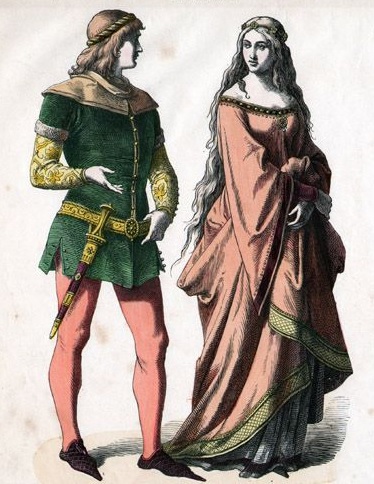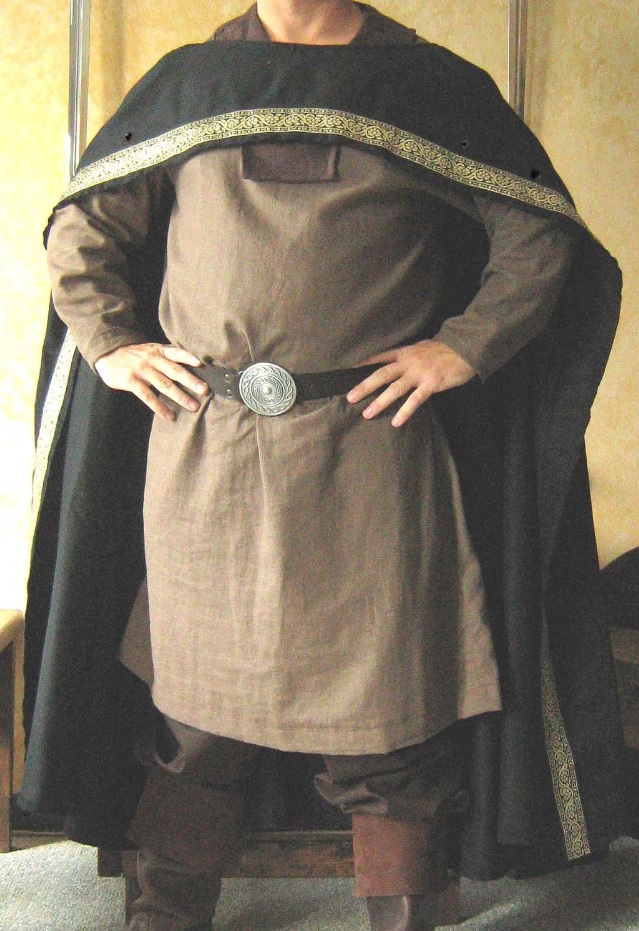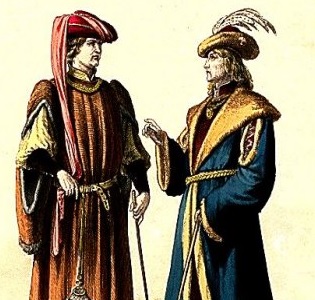During the medieval period, clothing was a marker of social status and wealth. Lords, who were members of the nobility, were expected to dress in a manner befitting their high rank. In this article, we will explore the clothing worn by medieval lords and the materials and styles that were popular during this time period.
Medieval Lord clothing
We have divided this section into multiple parts, explaining each one in its own section.

The Undergarments
Like modern-day clothing, medieval lord’s attire consisted of multiple layers. The first layer was the undergarments, which provided a base for the rest of the outfit. The undergarments worn by lords were similar to those worn by commoners, but they were typically made from finer materials.
Linen was the most common material used for undergarments, as it was lightweight and breathable. However, some lords may have opted for silk or wool undergarments if they could afford it. The undergarments consisted of a chemise (a long, loose-fitting shirt) and braies (a type of trousers that ended at the knee).
Tunic
The next layer of a medieval lord’s attire was the tunic. The tunic was a long, loose-fitting garment that reached down to the knees or ankles. It was worn over the chemise and was fastened at the waist with a belt.
The tunic was a versatile garment that could be worn on its own or as a base layer for other garments. It was made from a variety of materials, including wool, linen, and silk. The color and pattern of the tunic were often used to signify the lord’s social status and wealth.
For example, a lord may have worn a red or purple tunic to indicate their high rank, while a commoner may have worn a more modest brown or gray tunic. The tunic could also be embroidered with intricate designs or decorated with fur trim.
Cloak
In addition to the tunic, lords often wore a cloak to keep warm in the colder months. The cloak was a long, flowing garment that was draped over the shoulders and fastened at the neck with a brooch or clasp. It was typically made from wool or linen and was available in a range of colors.

The cloak was a practical garment that provided warmth and protection from the elements. It could also be used to make a fashion statement, as lords often chose cloaks in bold colors or with decorative details.
Shoes
Shoes were an important part of a medieval lord’s attire, as they protected the feet from the elements and rough terrain. Lords wore a variety of shoes, including boots, shoes, and slippers.
- Boots were a popular choice for outdoor activities, as they provided support and protection for the feet. They were typically made from leather and had a low heels.
- Shoes were a more formal option and were often worn with dressier outfits. They were made from a variety of materials, including leather, silk, and velvet, and had a pointed toe.
- Slippers were a lightweight, informal option that was often worn indoors.
The Headwear of a Medieval Lord
Medieval lords also wore a variety of headwear to protect their heads from the elements and to make a fashion statement. The most common headwear was the hat, which was worn by both men and women.
Hats were made from a variety of materials, including wool, linen, and silk. They came in a range of styles, including the simple cap, the pointed hat, and the hood. Lords often wore hats adorned with feathers or jewels to signify their wealth and status.

In addition to hats, lords also wore other forms of headwear, such as the coif – a type of close-fitting cap that covered the head and neck. The coif was often worn under a hat or hood to provide an extra layer of warmth.
Another popular form of headwear for lords was the crown, which was a symbol of royalty and power. Crowns were typically made from gold and were adorned with jewels and other precious stones. They were worn on special occasions, such as coronations or weddings, to signify the wearer’s high rank and authority.
Accessories
In addition to their clothing and headwear, medieval lords also adorned themselves with a variety of accessories. These included belts, bags, and jewelry.
- Belts were an important accessory for lords, as they were used to fasten their tunics and cloaks. Belts were made from a variety of materials, including leather, fabric, and metal, and were often adorned with decorative details, such as jewels or embroidery.
- Bags were another common accessory for lords, as they were used to carry personal items, such as coins, keys, and documents. Bags were made from a variety of materials, including leather and fabric, and came in a range of sizes and styles.
- Jewelry was also a popular accessory for lords. Rings, necklaces, and brooches were all common items of jewelry worn by lords. They were often made from gold and adorned with precious stones, such as diamonds and pearls. Jewelry was worn as a symbol of wealth and status, and lords often owned a wide range of pieces.

Conclusion
In conclusion, medieval lords wore a variety of clothing, headwear, and accessories to signify their high social status and wealth. Their attire consisted of multiple layers, including undergarments, a tunic, a cloak, and shoes.
They also wore a variety of hats and other forms of headwear and adorned themselves with belts, bags, and jewelry. The materials and styles of these garments and accessories varied depending on the lord’s wealth and the fashion trends of the time period.
